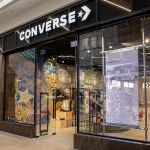The overall retail environment is changing quite dramatically, according to OIAs most recent Top-Line Retail Audit, but these changes do not appear to effect specialty retailers in any negative way. The most profound changes are clearly driven by two primary retail channels – Internet retail and the expansion of national retail chains into the outdoor category. Both channels are gaining market share primarily at the expense of department stores, while independent specialty retailers are holding their ground.
Based on point-of-sale data and consumer market estimates collected for this report, Internet and catalog retail accounted for only 12% of the outdoor market last year, but its share grew nearly six full percentage points to 17.8% this year. Comparing the same two periods for department stores, their share of the outdoor market fell to 15.2% compared to 24.3% the prior year. Mass merchants and independent outdoor specialty shops maintained relatively stable market shares, while national sporting goods and outdoor chains increased their penetration to nearly 30% of the market compared to 26% last year.
For the spring/summer 2005 six-month period, sales totaled $3.2 billion. Chain and specialty stores are the only two channels with year-on-year comparisons and sales increased in these two channels by 3.5%, from $2.8 billion to $2.9 billion. Chain store sales increased 4%, from $1.8 billion to $1.9 billion, and specialty store sales inched up about a half a percentage point from $995 million to $1 billion.
For the most part, specialty retailers are maintaining their average selling prices, and in several cases, improving them. Equipment, equipment accessories, and paddlesports categories all showed climbing ASPs for the spring-summer 2005 season, while apparel ASPs remained relatively flat and footwear declined by roughly $5 per pair. Sporting goods and outdoor chains are seeing a similar trend, with overall ASPs of outdoor apparel and equipment climbing about 16%. Every category showed at least a slight increase except for paddlesports, which had 5% lower average selling prices than last year.
Chain stores account for the majority of all outdoor goods sold, with a 60% share in equipment, 66% share in accessories, a 58% share in apparel, and more than 70% of the outdoor footwear market.
Paddlesports remains the only category where independent specialty stores have a dominant market share with about 80% of all sales going through this channel during the spring/summer period. However, paddlesports sales through specialty retailers fell 2.1% from $200 million to $196 million with boat sales down 2%, paddles up 6%, apparel down 6%, and accessories down 4%. Paddlesports accounted for roughly 8% of all specialty retail revenues during the period. Lifestyle apparel sales are also a clear strong-point for specialty retailers. While chain stores are the dominant player in this category, specialty retailers are showing strong growth with steady ASPs.
The report also states that Internet and catalog sales for the February-August period were $290 million. The main area where catalog and Internet retailers are gaining market share is equipment. While there are no firm numbers for Internet retailers growth rates in equipment, they are clearly taking market share from brick & mortar retailers. Specialty stores equipment sales fell 12%, while chain stores revenues from equipment fell 7%. The Internet channel currently accounts for 18% of all outdoor equipment sales compared to 10% of accessories, 8% of apparel sales, and only 6% of footwear sales.















